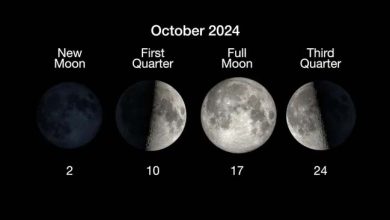Firefly Sparkle galaxy seen being built ‘brick by brick’

Science: A relic galaxy from the early universe has been discovered, providing new clues about what our own galaxy, the Milky Way, may have looked like billions of years ago. In new images from NASA’s James Webb Space Telescope, the galaxy appears as a long, distorted arc intertwined with star clusters that resemble a swarm of lightning bugs on a warm summer night. The glowing appearance has earned this cosmic structure the nickname “Firefly Sparkle Galaxy.”
Using computer modeling, the researchers “weighed” the galaxy, finding that its mass is similar to the mass of the Milky Way at the same stage of evolution, 600 million years after the Big Bang. Other galaxies discovered so far in the same time period are far more massive, according to a NASA statement.
“I didn’t think it would be possible to split a galaxy that existed so early in the universe into so many different components, let alone find that it has a mass similar to our own galaxy when it was in the process of forming,” Lamia said. “There’s a lot going on inside this tiny galaxy, including many different stages of star formation,” Mowla, co-lead author of the study and an assistant professor at Wellesley College in Massachusetts, said in the statement.
With the help of a natural phenomenon known as gravitational lensing, in which a foreground object acts as a magnifying glass, JWST revealed that the twinkling Firefly Sparkle galaxy has two companions, which together form the galaxy cluster MACS J1423. These two neighboring companion galaxies have a huge influence on how the Firefly Sparkle galaxy forms and builds mass over time, according to the statement.
“Most of the other galaxies that JWST has shown us are not elongated or stretched out, and we haven’t been able to see their ‘building blocks’ separately,” Mowla said in the statement. “With Firefly Sparkle, we’re seeing a galaxy being assembled brick by brick.”
Looking at the galaxy’s elongated, stretched-out appearance, the researchers were able to identify 10 distinct, twinkling star clusters, which are the main source of the light emanating from the galaxy. The new JWST images depict these star clusters in various shades of pink, purple and blue. This shows the different stages of star formation, which underscore the galaxy’s orderly evolution.





